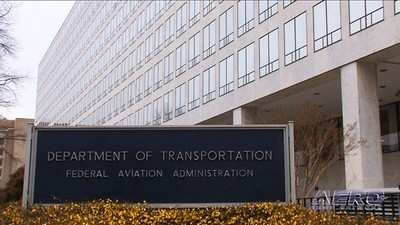Thu, May 07, 2009
OK, In This Day And Age... Who Isn't?
 A report (FI-2009-049) from the Department of Transportation's
office of the Inspector General is raising the alarm over the
potential vulnerabilities of the nations air traffic system to
damage and interference by hackers.
A report (FI-2009-049) from the Department of Transportation's
office of the Inspector General is raising the alarm over the
potential vulnerabilities of the nations air traffic system to
damage and interference by hackers.
The IG's Office claims that, "we issued our report on Federal
Aviation Administration (FAA) web applications security and
intrusion detection in air traffic control (ATC) systems, requested
by the Ranking Minority Members of the full House Transportation
and Infrastructure Committee and its Aviation Subcommittee. The
objectives of this performance audit were to determine whether (1)
web applications used in supporting ATC operations were properly
secured to prevent unauthorized access to ATC systems, and (2)
FAA’s network intrusion–detection capability was
effective in monitoring ATC cyber–security incidents."
The IG adds that, "We found that web applications used in
supporting ATC systems operations were not properly secured to
prevent attacks or unauthorized access. During the audit, our staff
gained unauthorized access to information stored on web application
computers and an ATC system, and confirmed system vulnerability to
malicious code attacks. In addition, FAA had not established
adequate intrusion–detection capability to monitor and detect
potential cyber security incidents at ATC facilities. The
intrusion–detection system has been deployed to only 11 (out
of hundreds of) ATC facilities. Also, cyber incidents detected were
not remediated in a timely manner."

 The report explains a bit more about
their concerns by stating that 'The need to protect ATC systems
from cyber attacks requires enhanced attention because the Federal
Aviation Administration (FAA) has increasingly turned toward the
use of commercial software and Internet Protocol (IP)1-based
technologies to modernize ATC systems. While use of commercial IP
products, such as Web applications,2 has enabled FAA to efficiently
collect and disseminate information to facilitate ATC services, it
inevitably poses a higher security risk to ATC systems than when
they were developed primarily with proprietary software. Now,
attackers can take advantage of software vulnerabilities in
commercial IP products to exploit ATC systems, which is especially
worrisome at a time when the Nation is facing increased threats
from sophisticated nation-state-sponsored cyber attacks.'
The report explains a bit more about
their concerns by stating that 'The need to protect ATC systems
from cyber attacks requires enhanced attention because the Federal
Aviation Administration (FAA) has increasingly turned toward the
use of commercial software and Internet Protocol (IP)1-based
technologies to modernize ATC systems. While use of commercial IP
products, such as Web applications,2 has enabled FAA to efficiently
collect and disseminate information to facilitate ATC services, it
inevitably poses a higher security risk to ATC systems than when
they were developed primarily with proprietary software. Now,
attackers can take advantage of software vulnerabilities in
commercial IP products to exploit ATC systems, which is especially
worrisome at a time when the Nation is facing increased threats
from sophisticated nation-state-sponsored cyber attacks.'
More News
Ultrahigh Frequency (UHF) The frequency band between 300 and 3,000 MHz. The bank of radio frequencies used for military air/ground voice communications. In some instances this may >[...]
During The 7 Second Descent, There Was Another TAWS Alert At Which Time The Engine Remained At Full Power On October 24, 2025 at 2115 mountain daylight time, a Cirrus SR22T, N740TS>[...]
From 2009 (YouTube Edition): Educational Organization Aims to Inspire by Sharing Tuskegee Story Founding leader Don Hinz summarized the Red Tail Project’s mission in simple, >[...]
“This feels like an important step since space travel for people with disabilities is still in its very early days... I’m so thankful and hope it inspires a change in m>[...]
Also: New Katanas, Kern County FD Training, IndiGo’s Botched Roster, MGen. Leavitt Named ERAU Dean The Australian Transportation Safety Bureau (ATSB) has wrapped up its inves>[...]
 ANN's Daily Aero-Term (12.19.25): Ultrahigh Frequency (UHF)
ANN's Daily Aero-Term (12.19.25): Ultrahigh Frequency (UHF) NTSB Prelim: Cirrus Design Corp SR22T
NTSB Prelim: Cirrus Design Corp SR22T Classic Aero-TV: The Red Tail Project--Carrying the Torch of the Tuskegee Airmen
Classic Aero-TV: The Red Tail Project--Carrying the Torch of the Tuskegee Airmen Aero-News: Quote of the Day (12.19.25)
Aero-News: Quote of the Day (12.19.25) Airborne 12.17.25: Skydiver Hooks Tail, Cooper Rotax Mount, NTSB v NDAA
Airborne 12.17.25: Skydiver Hooks Tail, Cooper Rotax Mount, NTSB v NDAA





